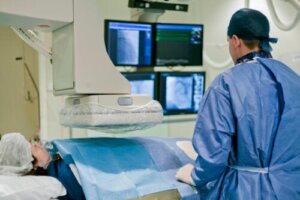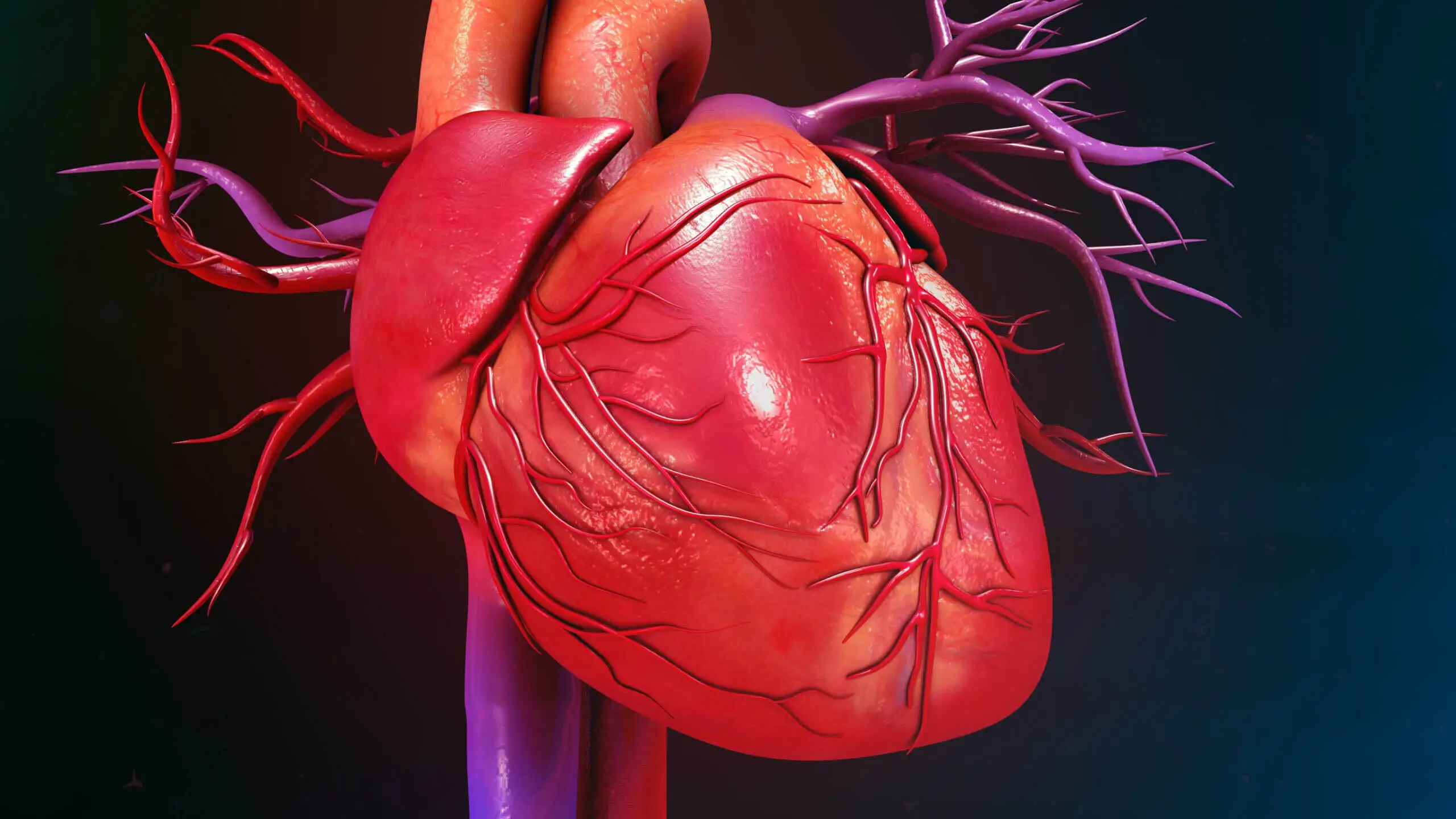What is Cardiac Catheterization For and How is it Performed?


Reviewed and approved by the nurse Leidy Mora Molina
Physicians have a wide variety of procedures that are useful in diagnosing and treating multiple conditions. Cardiac catheterization is one of them. Would you like to know more about this technique?
Cardiac catheterization is a surgical procedure that has expanded its scope and application in recent years, according to some studies. It consists of the introduction of a thin tube through a blood vessel until it reaches the heart.
Thus, it provides very important information about the state of the heart muscle, its valves, and blood vessels. In this regard, it’s possible to perform tests, take samples, and apply medication during the procedure.
What is cardiac catheterization for?
Cardiac catheterization can be applied in both the diagnosis and treatment of multiple cardiovascular conditions. The procedure is useful in the diagnosis of the following conditions:
- Coronary artery disease
- Microcirculation pathologies
- Congenital heart disease
- Heart failure
- Valvulopathies
Meanwhile, it’s also useful in assessing how the blood vessels are connected. In addition, it allows the pressure inside the heart to be checked and can help treat arrhythmias, angina pectoris, and valve problems.
Procedures performed by cardiac catheterization
Ultimately, cardiac catheterization also facilitates the performance of multiple medical procedures that can be done simultaneously:
- Coronary angiography: In this procedure, a contrast medium is used through the catheter to find obstructions in the arteries that supply the heart. The organ will be observed through X-rays.
- Cardiac ablation: This is one of the main measures to treat conduction disorders.
- Hemodynamic evaluation and ventriculogram: This allows doctors to measure the pressure inside the heart chambers and also measure the oxygen pressure in the organ. The ventriculogram shows how blood is ejected from both ventricles.
- Angioplasty and stent placement: Angioplasty is a procedure that seeks to increase the caliber of a blocked blood vessel. A stent is a metallic mesh that prevents the blood vessel from collapsing again.
- Cardiac biopsy: This consists of the extraction of a sample of cardiac tissue for subsequent analysis and study under a microscope.
- Valvuloplasty: This refers to a repair of a defective heart valve.
- Closure of holes in the myocardium and repair of other abnormalities.

Preparation before the procedure
As this is an invasive technique, it’s necessary to have a very rigorous prior preparation. The specialist physician will be in charge of giving all the indications in the days prior to the cardiac catheterization. It’s recommended not to consume any type of food in the last 6 to 8 hours.
In addition, it’s necessary to avoid all types of liquids, including water, at least four hours beforehand. All these measures will prevent vomiting due to the effects of anesthesia.
On the other hand, it’s necessary to inform the specialist about any medication that you take regularly, since some of them should be suspended. Anticoagulants should be avoided in the days prior to the surgery, as they increase the risk of bleeding.
Some diagnostic tests increase the side effects of certain medications.
We think you may also enjoy reading this article: How to Deal with a Heart Attack if You’re Alone
How is a cardiac catheterization performed?
Before starting cardiac catheterization, the nursing team will probably measure your blood pressure and ask you to urinate to empty your bladder. They’ll also place electrodes and remove hairs from the area where the catheter will be inserted.
The procedure is usually done in an operating room, where there’s a variety of imaging equipment. The healthcare team will proceed to lay you down on a special stretcher and restrain you with some straps to prevent displacement. Once you’re lying down, an intravenous line will be inserted, through which the anesthesia will be administered.
The anesthesia may be general, in which you’ll be totally asleep, or partial, in which you’ll be awake and able to follow instructions. When it takes effect, the specialist will proceed to make a small cut in your groin, wrist, or neck to pass 1 or 2 catheters that will reach the heart.
First, it’s necessary to numb the area where the catheter will go. Then, a cut is made in the blood vessel to be approached.
Finally, a plastic sheath is inserted with the catheter and guided to the heart. During the procedure, the physician may ask you to adopt different positions or to tilt the table at different angles.
Recovery
Recovery after cardiac catheterization will depend on the procedure performed and the person’s state of health. Generally speaking, several hours should be spent in a recovery room while the effects of the anesthesia wear off.
The time it takes to remove the catheter may vary, depending on several factors. If it was performed in the groin, a device called an introducer must be left in place for 6 to 8 hours. The specialist physician will be in charge of removing these pieces.
After the catheter is removed, the physician will have to compress the area for 10 to 15 minutes, as well as place a compression bandage to prevent bleeding. Afterward, you won’t be restricted in any way. However, if the catheterization was performed through the groin, the leg must be kept immobile for 24 hours.
We think you may be interested in reading this, too: The Increase in Heart Rate During Physical Activity
Risks and complications
Although this is a very safe procedure with a high success rate, performing it involves multiple risks. In fact, a study published in Current Cardiology Reviews defines acute kidney injury as one of the complications of cardiac catheterization. In addition, it typically requires a longer hospital stay.
The main risks of cardiac catheterization include the following:
- Bleeding
- Blood clots
- Irregular heart rhythm
- Bruising
- Cardiac tamponade
- Hypotension
- Infections

Contraindications of cardiac catheterization
As with all medical procedures, there are several cases in which performing this procedure isn’t recommended. Fortunately, the contraindications for cardiac catheterization are relative – i.e., it can be performed when the benefits outweigh the risks.
However, it’s necessary to be very careful, as the probability of complications increases. In this regard, the relative contraindications include the following:
- Fever
- Coagulopathies
- Acute renal injury
- Renal failure
- Uncontrolled arrhythmias
- Systemic infections
- Uncontrolled arterial hypertension
An effective procedure with few complications
Cardiac catheterization is a quick and simple procedure that’s useful for diagnosing and treating multiple conditions. While it is invasive, there’s little preparation beforehand, and recovery is short in most cases.
However, it should be noted that there are several risks involved, ranging from bleeding to renal injury. It’s advisable to consult a specialist in case of any questions or concerns.
All cited sources were thoroughly reviewed by our team to ensure their quality, reliability, currency, and validity. The bibliography of this article was considered reliable and of academic or scientific accuracy.
- Bangalore S, Barsness GW, Dangas GD, Kern MJ et al. Evidence-Based Practices in the Cardiac Catheterization Laboratory: A Scientific Statement From the American Heart Association. Circulation. 2021 Aug 3;144(5):e107-e119.
- Ram P, Horn B, Lo KBU, Pressman G, Rangaswami J. Acute Kidney Injury Post Cardiac Catheterization: Does Vascular Access Route Matter? Curr Cardiol Rev. 2019;15(2):96-101.
- Kosova E, Ricciardi M. Cardiac Catheterization. JAMA. 2017 Jun 13;317(22):2344.
- Aoun J, Hattar L, Dgayli K, Wong G, Bhat T. Update on complications and their management during transradial cardiac catheterization. Expert Rev Cardiovasc Ther. 2019 Oct;17(10):741-751.
- Yasumura K, Ueda Y. [Diagnostic cardiac catheterization]. Nihon Rinsho. 2016 Jun 20;74 Suppl 4 Pt 1:260-4.
- Moustafa GA, Kolokythas A, Charitakis K, Avgerinos DV. Therapeutic Utilities of Pediatric Cardiac Catheterization. Curr Cardiol Rev. 2016;12(4):258-269.
This text is provided for informational purposes only and does not replace consultation with a professional. If in doubt, consult your specialist.








